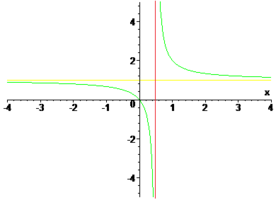Four Muffins
New member
- Joined
- Jun 29, 2022
- Messages
- 25
Hello.
I was working on a problem and made a mistake, and I'm trying to understand exactly what it was. I didn't realise when I was writing the solution that
x/y > 1 ---> x > y
doesn't work when x and y are negative.
Have I not followed the axiom
(3d) For all x, y, z ∈ ℝ, if x<y and 0<z, then xz<yz
from here, and that by using x and y with a -1 factor, I haven't flipped the inequality sign? Or is it something else, like a general math thing that axioms aren't needed for, and I just have to notice it doesn't work and qualify the statement with 'for x, y ∈ ℝ+'? Or is it just not valid to multiply both sides of the inequality by y?

I was working on a problem and made a mistake, and I'm trying to understand exactly what it was. I didn't realise when I was writing the solution that
x/y > 1 ---> x > y
doesn't work when x and y are negative.
Have I not followed the axiom
(3d) For all x, y, z ∈ ℝ, if x<y and 0<z, then xz<yz
from here, and that by using x and y with a -1 factor, I haven't flipped the inequality sign? Or is it something else, like a general math thing that axioms aren't needed for, and I just have to notice it doesn't work and qualify the statement with 'for x, y ∈ ℝ+'? Or is it just not valid to multiply both sides of the inequality by y?





